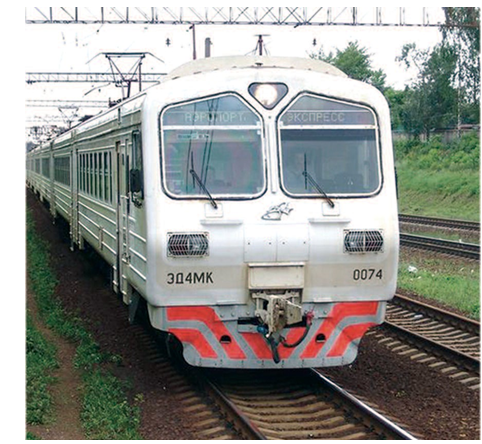Event recorder for local electrical trains RPDA, RPDA – PT
 Event recorder for local electrical trains RPDA is designed for real time measuring and recording of up to 30 basic parameters of train operation during the whole trip.
Event recorder for local electrical trains RPDA is designed for real time measuring and recording of up to 30 basic parameters of train operation during the whole trip.
Registered data decoding allows to quickly estimate technical condition of electrical train, to perform preventive maintenance of train in time, to reduce their duration and working hours of maintenance staff, as well as to control schedule implementation of trains movements and correctness of train control. Two modifications of recorders have been worked out and implemented: RPDA - for DC local electrical trains and RPDA-PT – for AC local electrical trains.
Event recorder provides
- Recording of motion parameters of train: current speed, covered distance, signals of cabin traffic light (ALSN), temporary speed limits etc.
- Recording of information on contact-wire voltage, currents of each traction motor, safety switches operation modes, positions of driver’s controller, heating toggle switch position, states of output circuits of autopilot system etc.
- Data recording, storage and processing of received data with the help of automated workstation (AWS) of RPDA data decoding.
- Automatic recording of power consumption history for each locomotive crew.
- The possibility to analyze power consumption of each electrical train and each locomotive crew.
Event recorder for local electrical train RPDA features
The data measuring blocks are installed in all motor coaches of electrical trains; information from those blocks is transferred to registration block, located in the head coach. System bus is based on FSK-interface using standard intercar wire of electrical trains.
Event recorder RPDA allows:
1. For service teams – estimate technical condition of electrical train (synchronization of main controllers (KSP) operation, availability of inductive shunts, KSP positions of motor coaches, armature current, armature current limit relay settings, operating time of high-voltage switch (BB), skidding relay (SR)) for its necessary maintenance.
2. For operation teams:
- analyze the results of trip (schedule implementation, scheduled running time and stops time execution, speed limits execution, traffic lights speed regimes etc.);
- check locomotive crew actions according to safety management rules;
- analyze power consumption by electrical train at any chosen route section;
- prepare data for analysis of power consumption train-wise, engine driver- wise and locomotive-series-wise etc.
Application effect components
- Reduction of working time related to manual decoding of speed measuring tapes.
- Increasing measurement and registration accuracy and prognosis of power consumption.
- Reduction of working time for power consumption analysis.
- Reduction of costs for diagnostics and maintenance of local electrical trains.
|
Technical specifications |
||
|
Parameter name |
RPDA for DC local electrical trail |
RPDA for AC local electrical trail |
|
Power line voltage of direct curent (nominal) |
50 or 110 V |
110 V |
|
Voltage variation within the range |
35..140 V |
80..140 V |
|
Power consumption by each block separately |
maximum 15 Вт |
|
|
Operating temperature range |
-40..+ 50°С |
-40..+60°С |
|
Cartridge memory capacity |
16 or 64 Мб |
64 Мб |
|
Inter service time |
minimum 100 h. |
|
|
Mass of component parts (including connecting cables) |
maximum 9 кг |
maximum 19 кг |
|
Registration range |
||
|
Running speed |
0..250 km/h |
|
|
Pressure in brake line/brake cylinders |
0..10 atm. |
|
|
Voltage on contact wire |
0..4 000 V |
- |
|
Currents in traction motors circuits |
0..750А |
- |
|
Primary winding current |
- |
0..50А |
|
Voltage on contact wire |
- |
0..35 kV |
|
Active power on secondary winding |
- |
0.. 10 000 kVt |
|
Reactive power on secondary winding of transformer |
- |
0..10 000 kVt |
|
Current in parallel paths of traction motors |
- |
0..750А |
|
Terminal voltage of traction motors |
- |
0..4 500 V |
|
MEASUREMENT ACCURACy |
||
|
Current of traction motors |
±0,5% |
- |
|
Contact wire voltage |
±0,5% |
- |
|
Power consumption |
±1,0% |
- |
|
Active power |
- |
±0,5% |
|
Reactive power |
- |
±1,0% |

















